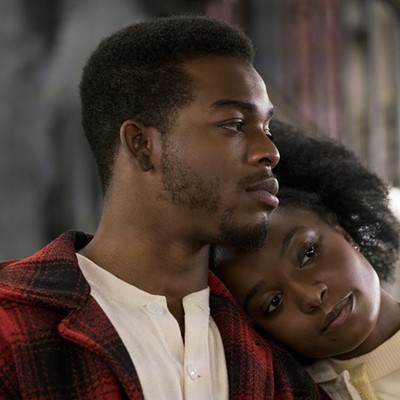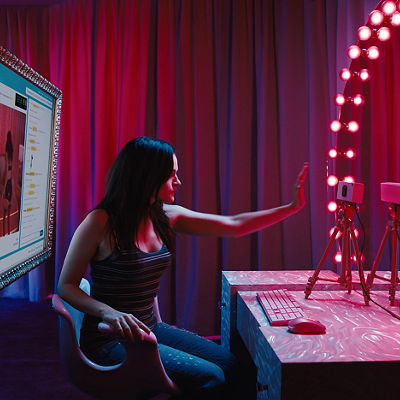Speed and (to a lesser extent) Twister were exemplary roller-coaster movies. But neither subtlety nor variety is de Bont's strong suit. Wise's career, on the other hand, is extraordinarily wide-ranging, from his early genre films (Curse of the Cat People, The Day the Earth Stood Still) through his big-budget musicals (West Side Story, The Sound of Music) and his savvy technical experiments. In the 1963 version of The Haunting, Wise set himself the problem of creating terror without special effects, without monsters, without showing anything. He concentrated on performance, lighting, camera movement and sound.
If there is any surprise to de Bont's version of The Haunting, it is the extent to which, for the first half, de Bont works in a similar mode. The second half, however, is no surprise, and more's the pity. Liam Neeson plays Dr. David Marrow, a psychologist studying fear. Together with his faithful girl companion, Mary (Alix Koromzay), he gathers together a handful of people with diverse character disorders and invites them to spend a week at Hill House, under the pretense of a sleep-disorder experiment. Nell (Lili Taylor) is an awkward sad sack. Luke (Owen Taylor) is goofy, boyish and pathologically unreliable. And Theo (Catherine Zeta-Jones) is a bisexual jet-setter.
It is Marrow's intention to scare the participants and chronicle their reactions. But the house is scary enough already. Marrow — as the first stage in his scare tactics — explains that Hill House was built more than a century ago by wealthy mill owner Hugh Crain for his wife, René, and the many children they intended to raise. But after a series of miscarriages, René committed suicide, and Hugh turned into some sort of monster with a particular fixation on children. The locals have long avoided the place, and even the caretaker (Bruce Dern) and his wife (Marian Seldes) refuse to stay after dark. Not surprisingly, the four new occupants become targets of the ghost, or ghosts, that make Hill House their home.
De Bont may keep things relatively demure for the first half, but almost all the changes he and screenwriter David Self have brought to the material serve to weaken the effect. For instance, for much of the 1963 version, it is difficult to be sure that any of the weirdness is really happening — that it's not merely Nell's hallucination or the result of natural forces. The new version removes all ambiguity relatively early on by showing us ghostly manifestations, even when none of the characters are seeing them. Similarly, de Bont allows his focus to wander. Taylor is a wonderful actress, but she's not able to draw us in the way Julie Harris did in the original.
Despite the care lavished on realizing Eugenio Zanetti's amazing production design, the script is sometimes downright sloppy. Two characters are introduced for no discernible purpose, then disappear precipitously and are never referred to again. At one point Nell has a major revelation as to who "Carolyn" was. Unfortunately, this is the first we've heard of any "Carolyn."
De Bont and Self have also embellished the plot, particularly the back story, with so many unnecessary twists — none of which serve much purpose — that it becomes wearying. And inevitably, during the second half, the filmmakers pull out the stops, with constant computer effects, showing us quite explicitly what never should have been shown at all. The monsters and morphs and digital sound make for an occasionally effective shock, but more often than not, the concreteness turns the audience's fearful anticipation into disappointing, even comical, reality. By the end, The Haunting has become a farrago of shtick that we've seen before (and better) in Burn Witch Burn, in Alien and in Poltergeist.
The first-rate cast really tries its best: It's primarily Taylor's movie, but Wilson (Bottle Rocket) is perfect, and Zeta-Jones is almost as good.
With The Haunting arriving in theaters so close to The Blair Witch Project, it's impossible not to make the comparisons between two films that take such obviously different approaches to horror. What's ironic is how much closer Blair Witch is in its strategies to the original Haunting than the new Haunting is itself.





